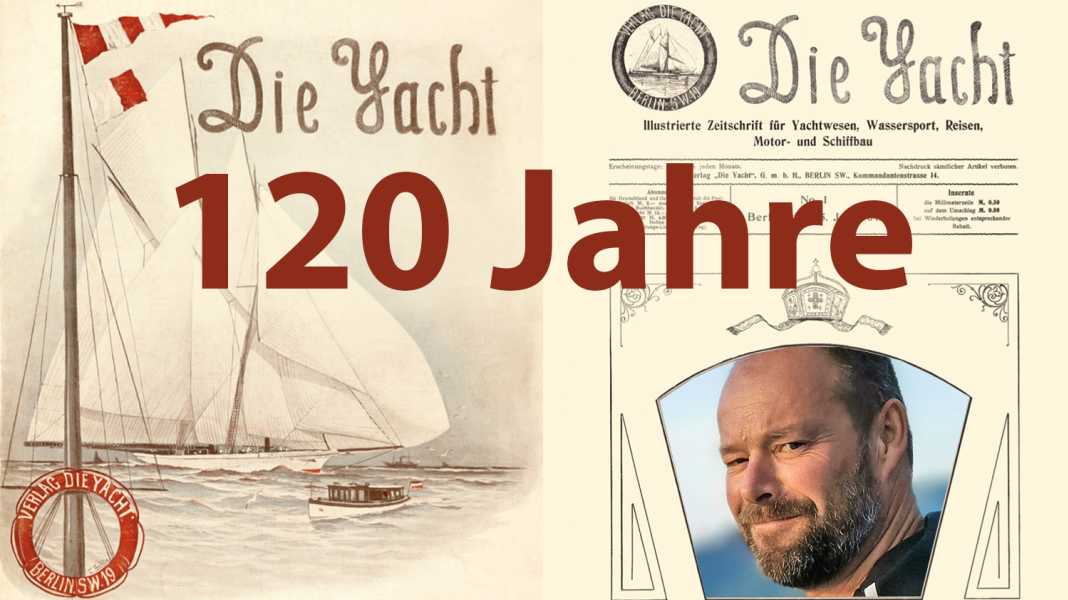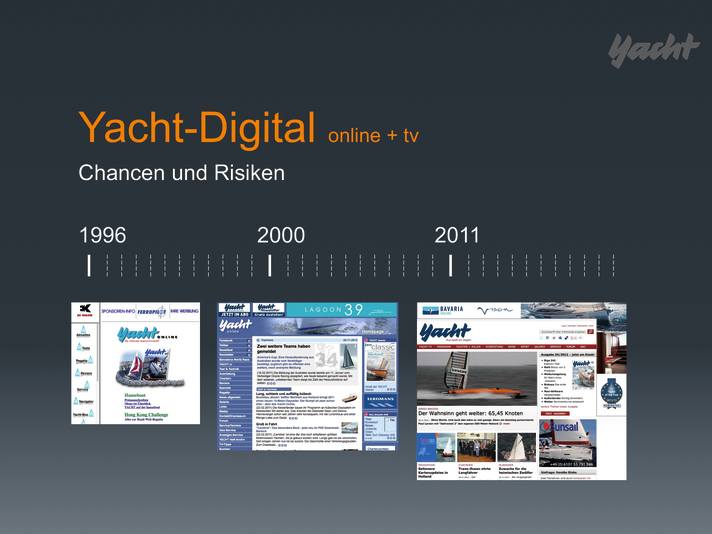
Click here for all articles
Lars Bolle, Editor-in-Chief digital
Far more than fits in one booklet"
Lars Bolle on the humble beginnings of YACHT online and almost 30 years of development up to today's "digital first"
We have to do something on the internet now." This is what publishing director Olaf Kleinelanghorst is said to have told editor-in-chief Jörn "Edde" Bock in the mid-1990s. At least that's how it's reported. Edde repeated the sentence at an editorial conference, followed by the unambitious advice that anyone who wanted to do this should get in touch with him. I was young and naive and curious enough, so I got in touch. That was almost 30 years ago now, and the topic of the Internet, nowadays generalised as digital, has been with me the whole time.

In the early days, the Internet had nothing to do with what we know today. In the beginning, we were an "IP" of AOL, a so-called individual producer at America Online, one of the first Internet providers. Back then, the network only consisted of the offerings of a few telecommunications giants. Messages and pictures the size of postage stamps were inserted into prefabricated masks. Only members of AOL and therefore paying customers of this provider had access. There were practically no independent websites at the time.
All this, and later much more, happened alongside my actual job. I was head of the sports department, but I was also deployed everywhere else: seamanship, tests, areas.
My path to YACHT led via its little sister, as we always called it, the magazine "Der Segler". Founded after reunification as a joint venture with Delius Klasing Verlag, the publishers at the time, Mr and Mrs Gangloff, tried to establish a magazine for sailors from the former GDR. I was sanding the underwater hull of my Finn dinghy in Warnemünde marina when Ralf Gangloff came by and shook my hand for a traineeship, for which I had previously applied. However, it soon became clear that the desired numbers were not achievable. The editorial team moved from Rostock to Travemünde and I moved with them, the magazine's content was expanded to include "Northern Germany" and the numbers increased. But not to the necessary extent. When "Der Segler" was discontinued, I was offered the opportunity to switch to YACHT.
So there I was, the only one with Internet access, still using a telephone modem with a bandwidth of 56 kilobits per second. If you remember, that was the time when you could get a coffee after entering the connection command and then listen to the beeping and creaking of the modem.
One or two years before the turn of the millennium, the "real" Internet was launched, with its own website and its own address: yacht.de. The technology had hardly changed, ISDN only arrived in 1998, at least with 64, as a double line with 128 kbps. However, I had to share this with the graphics department, which was already exchanging the first digital layouts with the print shop. When an upload was running, there was a break.

The strategy was different back then than it is today. The printed YACHT had and still has a lead time of around ten days. True topicality was therefore not possible. Today it seems almost ridiculous to me that we filled a double page with regatta results in every issue. The lists, sent by fax, were a thing of the past by the time they appeared.
YACHT online, on the other hand, was to be the "daily newspaper for sailors", reporting on the latest news. It was hoped that this would be financed by advertising revenue, as the Internet was free everywhere in its early days. In terms of content, the website was intended as a supplement to the magazine, not as competition, as the printed magazine was not to be jeopardised.
Yes, that was indeed the thinking for many years, or rather decades. There was talk of cannibalism, that online would take readers away from the magazine for free. A killer argument that was based more on feelings than arguments. The argument was based on the slow decline in print circulation, which YACHT was only able to avoid in two of the last 25 years despite its best efforts.
Today, online experts attribute the decline in print to a change in reading habits. A statistic from the USA dating back to 1945, at the end of 2015, is very interesting in this regard. The frequency of newspaper use in households was analysed. Apart from a few small increases and decreases, the curve points downwards as if drawn with a ruler. Neither radio, nor television, nor the Internet had a sudden impact on the use of printed media. Rather, the transformation from print to digital has been a fluid process that continues to this day.
Delius Klasing Verlag has also followed this development. Three years ago, it set up a digital department; I left my print home at YACHT and have been in charge of all digital water sports websites as editor-in-chief ever since.
Today, digital is an integral part of every editor's work. And a whole family of new products has been added: YouTube, Facebook, Instagram, podcasts, newsletters. The acceleration of the digital expansion was accompanied by a change in strategy. All content produced by the editorial team is also available online and, together with the daily news coverage, there are far more articles than the magazine can deliver in a comparable period of time. Since the spring of this year, the magazine has been available as a premium offer, i.e. as a paid subscription for 2.49 euros per week. In other words, less than the cost of the coffee you used to get while waiting to dial in.
It still seems almost surreal to me that we are celebrating 120 years of YACHT, but have already been travelling digitally for around a quarter of that time. What a brilliant development!


